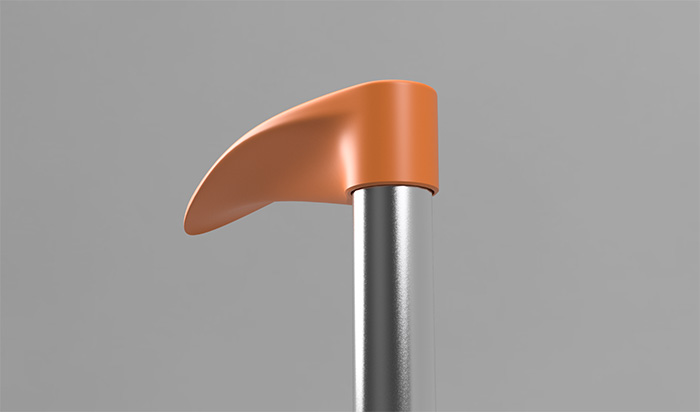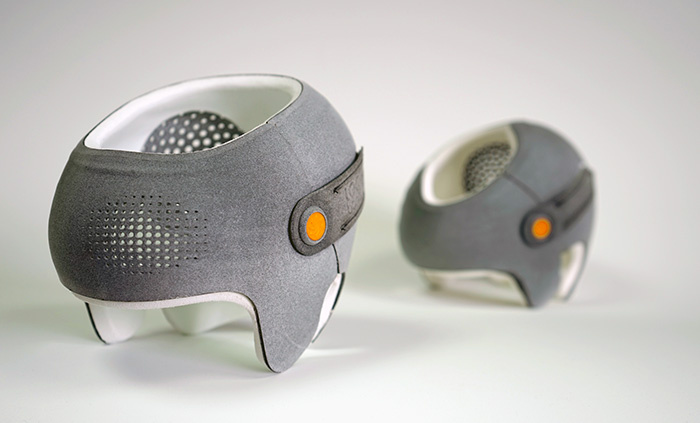3D printing refers to the process of building a three-dimensional object from a digital file. It was originally used for fast prototyping of industrial products and designs. By applying 3D printing techniques to orthotics, we can achieve a number of benefits for our patients.
Because 3D printing works by building an orthotic layer by layer, it allows us our orthotists far more flexibility in designing and manufacturing innovative and bespoke orthotics. This means that we can achieve treatment for our patients that are simply not possible within traditional manufacturing techniques.
For example, we can create an orthosis that has very precise variations in degrees of thickness and pressure, for maximum therapeutic impact. At the same time, we can manufacture orthoses that are lighter and cooler, and therefore more comfortable to wear.

We are developing some exciting new products at LOC that harness state-of-the-art design benefits thanks to additive manufacturing (3D printing).
Having purchased our first Markforged Mark II printer for small in-house engineering developments, we can now print continuous carbon fibre, kevlar and high tensile glass fibres.
This gives us greater freedom of design and engineering, whilst aiding our manufacturing team in the form of jigs, fixtures and devices for orthotic assessments.

Our in-house design team have developed the all-new LOCband-Lite based upon HP's Multijet Fusion technology (MJF). The 3D printed cranial helmet features a lightweight design thanks to the thinner wall thickness and vented meshes.
This has a number of tangible benefits for our patients: it is cooler and more comfortable to wear due to greater heat dissipation and reduced neck strain from the lightweight design.

We have the following facilities and amenities at our Kingston Upon Thames location:
We also have the Gait Laboratory for orthotics patients and Onsite Manufacturing for speedy turnarounds and adjustments whilst you wait.
We have the following facilities and amenities at our Cambridge location:
We have the following facilities and amenities at our Bristol location:
For more information, visit Litfield House Medical Centre.
LOC’s clinic is based in the University of Salford’s Podiatry Department and provides treatments for orthotics, scoliosis, pectus deformities, positional plagiocephaly and club foot.
It is also the base for LOC’s northern OSKAR clinic which is run by Sam Walmsley, clinical director of LOC, in conjunction with Elaine Owen MBE MSc SRP MCSP.
We have the following facilities and amenities at our Romford location:
Parking:
There is NO parking directly outside the clinic. These spaces are reserved for residents.
The nearest parking can be found at Billet Lane public pay & display opposite Queens Theatre, a 2-minute walk from the clinic.
Click here for more information about Best Health Clinic
Due to COVID-19, we have had to temporarily close the Salford clinic and are operating out of another clinic in Bolton.
508 Blackburn Rd,
Astley Bridge,
Bolton
BL1 8NW
For more information, please visit The Good Health Centre

“It’s life-changing, my swimming coach has even remarked what a difference my treatment has made" Read how pectus bracing treatment helped to correct Aris' complex chest deformity, involving a combination of pectus excavatum, pectus carinatum and rib flaring.

Cerebral palsy patient Lucas sees significant improvement in his walking after only six months in his new custom Ankle Foot Orthoses (AFOs), designed by Professor Saeed Forghany in our Manchester clinic. Hear how a detailed gait analysis and bespoke AFOs significantly improved Lucas's gait and comfort.

Freddie’s positional plagiocephaly was treated successfully with the LOCBand Lite, going from 11mm to 2mm after four months in his helmet.

Adult club foot (talipes) patient Natasha says, "I cannot stress how amazing my AFOs are and how they have changed so much for me. The support they give me allows me to walk without crutches outside the house for the first time in over fifteen years."

Diagnosed with adolescent idiopathic scoliosis at 14 years old, Polly and mum Zoe looked to the LOC Scoliosis Brace to help her curve and avoid surgery at a later date.

LOC opens its first clinic in Northern Ireland, LOC Belfast, offer non-surgical orthotic treatment for scoliosis, pectus carinatum and pectus excavatum. Here, we will also be able to provide orthotic treatments for a range of adult and paediatric lower limb conditions including cerebral palsy, spina bifida, hypermobility, stroke, post-polio syndrome, and multiple sclerosis.

Mum Natalie shares her experience of having both her identical twins diagnosed with craniosynostosis. Ella and Nina had surgery at Great Ormond Street Hospital before going through cranial remoulding therapy at the London Orthotic Consultancy.

See how a thorough gait analysis and a correctly-fitted, bespoke Reciprocating Gait Orthosis (RGO) helped Ted, a spinal surgery and cancer survivor, improve his rehabilitation and mobility goals, getting him back on his feet again.